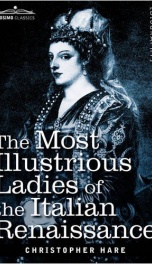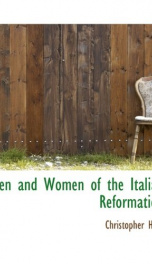hare

See text Hares and jackrabbits are leporidaes belonging to the genus Lepus. (There are four other species called hares: Caprolagus or the Hispid Hare, and Pronolagus or the red rock hares.) Hares less than one year old are called leverets. Hares are very fast-moving. The European Brown Hare (Lepus europaeus) can run at speeds of up to 72 km/h (45 mph). They live solitarily or in pairs, while a "drove" is the collective noun for a group of hares. Their bodies are capable of absorbing the g-force produced while running at extreme speeds or while escaping predators. A common type of hare in Arctic North America is the Snowshoe Hare, replaced further south by the Black-tailed Jackrabbit, White-tailed Jackrabbit and other species. Normally a shy animal, the European Brown Hare changes its behaviour in spring, when hares can be seen in broad daylight chasing one another around meadows; this appears to be competition between males to attain dominance (and hence more access to breeding females). During this spring frenzy, hares can be seen "boxing"; one hare striking another with its paws (probably the origin of the term "mad as a March hare"). For a long time it had been thought that this was inter-male competition, but closer observation has revealed that it is usually a female hitting a male, either to show that she is not yet quite ready to mate, or as a test of his determination. Hares do not bear their young below ground in a burrow as do other leporids, rather in a shallow depression or flattened nest of grass called a form. Hares are adapted to the lack of physical protection, relative to that afforded by a burrow, by being born fully furred and with eyes open. They are hence able to fend for themselves soon after birth; they are precocial. By contrast, the related rabbits and cottontail rabbits are altricial, having young that are born blind and hairless. All rabbits (except the cottontail rabbits) live underground in burrows or warrens, while hares (and cottontail rabbits) live in simple nests above the ground, and usually do not live in groups. Hares are generally larger than rabbits, with longer ears, and have black markings on their fur. Hares have not been domesticated, while rabbits are often kept as house pets. There is a domestic pet known as the "Belgian Hare" but this is a rabbit that has been selectively bred to resemble a hare.[1] The hare's diet is very similar to the rabbit's. They are also both part of the Lagomorph order. Hares and rabbits are plentiful in many areas, adapt to a wide variety of conditions, and reproduce quickly, so hunting is often less regulated than for other varieties of game. In rural areas of North America and particularly in pioneer times,[3] they were a common source of meat. However, because of their extremely low fat content, they are a poor choice as a survival food.[4] Hares can be prepared in the same manner as rabbits—commonly roasted or taken apart for breading and frying. Hasenpfeffer (also spelled hasenfeffer) is a traditional German stew made from marinated rabbit or hare. Pfeffer is not only the name of a spice, but also of a dish where the animal's blood is used as a gelling agent for the sauce. Wine or vinegar is also a prominent ingredient, to lend a sourness to the recipe. Jugged Hare (known as civet de lièvre in France), is a whole hare, cut into pieces, marinated and cooked with red wine and juniper berries in a tall jug that stands in a pan of water. It traditionally is served with the hare's blood (or the blood is added right at the very end of the cooking process) and Port wine.[5][6][7][8] Jugged Hare is described in the influential 18th century cookbook, The Art of Cookery by Hannah Glasse, with a recipe titled, "A Jugged Hare," that begins, "Cut it into little pieces, lard them here and there...." The recipe goes on to describe cooking the pieces of hare in water in a jug that it set within a bath of boiling water to cook for three hours.[9] Beginning in the nineteenth century, Glasse has been widely credited with having started the recipe with the words "First, catch your hare," as in this citation.[6] This attribution is apocryphal. However, having a freshly caught, or shot, hare enables one to obtain its blood. A freshly killed hare is prepared for jugging by removing its entrails and then hanging it in a larder by its hind legs, which causes the blood to accumulate in the chest cavity. One method of preserving the blood after draining it from the hare (since the hare itself is usually hung for a week or more) is to mix it with red wine vinegar in order to prevent it coagulating, and then to store it in a freezer.[10][11] Many other British cookbooks from before the middle of the 20th century have recipes for Jugged Hare. Merle and Reitch[12] have this to say about Jugged Hare, for example: In 2006, a survey of 2021 people for the television channel UKTV Food found that only 1.6% of the people aged under 25 recognized Jugged Hare by name. 7 out of 10 of those people stated that they would refuse to eat Jugged Hare if it was served at the house of a friend or a relative.[13][14] The hare (and in recent times, rabbit) is a staple of Maltese cuisine. The dish was presented to the island's Grandmasters of the Sovereign Military Order of Malta as well as Renaissance Inquisitors resident on the island, several of whom went on to become Pope. According to Jewish tradition, the hare is among many of the mammals deemed not Kosher and therefore not eaten by observant Jews. In England, a now rarely-served dish was potted hare. This was similar to the dish of Potted Shrimp which can still be found today in some specialty restaurants. The hare meat is cooked, then covered in at least one inch (preferably more) of butter. The butter acts as a preservative, and the dish is stored for up to several months. It is served cold, often on bread or as an appetizer. The hare in African folk tales is a trickster; some of the stories about the hare were retold among African slaves in America, and are the basis of the Brer Rabbit stories. The hare appears in English folklore in the saying "as mad as a March hare". In Irish folklore the hare is often seen as an evil creature, principally associated with witches. Many cultures, including the Indian and Japanese, see a hare in the pattern of dark patches in the moon (see Man in the Moon); this tradition forms the basis of the Angelo Branduardi song "The Hare in the Moon"[1] The constellation Lepus represents a hare. One of Aesop's fables tells the story of The Tortoise and the Hare. Recent (2004) research has followed the history and migration of a symbolic image of three hares with conjoined ears. In this image, three hares are seen chasing each other in a circle with their heads near its centre. While each of the animals appears to have two ears, only three ears are depicted. The ears form a triangle at the centre of the circle and each is shared by two of the hares. The image has been traced from Christian churches in the English county of Devon right back along the Silk Road to China, via Western and Eastern Europe and the Middle East. It is possible that even before its appearance in China it was actually first depicted in the Middle East before being re-imported centuries later. Its use has been found associated with Christian, Jewish, Islamic and Buddhist sites stretching back to about 600 CE.[15] The hare has given rise to local placenames, as they can often be repeatedly observed over many years in favoured localities. An example in Scotland is 'Murchland', the Scots for a hare being 'Murchen'.[16]
do you like this author?
What readers are saying
What do you think? Write your own comment on this book!
write a commentWhat readers are saying
What do you think? Write your own comment on this author!
write a commentBook list

the story of bayard the good knight without fear and without reproach
Series:
Unknown
Year:
Unknown
Raiting:
4/5
Show more
add to favoritesadd In favorites

the romance of a medici warrior being the true story of giovanni delle bande ne
Series:
Unknown
Year:
Unknown
Raiting:
4/5
Show more
add to favoritesadd In favorites

the most illustrious ladies of the italian renaissance
Series:
Unknown
Year:
Unknown
Raiting:
3.5/5
When Europe broke free of the dreadful clutches of the Middle Ages into the intellectual playground of the Renaissance, an extraordinary thing happened: Cultured women began to take their place as central figures giving harmony to entire social groups. So says author "Christopher Hare," a pseudonym for British writer MARIAN ANDREWS (d. 1929) who is mostly remembered for her historical novels but here turns her keen eye on historical fact. First published in 1904, this charming volume offers sketches of some "typical" cultured women of the Italian Renaissance, including: • Lucrezia Tornabuoni, wife of Piero dei Medici • Clarice degli Orsini, wife of Lorenzo dei Medici • Queen Giovanna I • Queen Giovanna II • Beatrice d'Este, Duchess of Milan • Bianca Maria Sforza, wife of the Emperor Maximilian • Isabella d'Este, Marchesa of Mantua • Renée of France, Duchess of Ferrara • Lucrezia Borgia, Duchess of Ferrara • and others.
Show more
add to favoritesadd In favorites
Book list

the story of bayard the good knight without fear and without reproach
Series:
Unknown
Year:
Unknown
Raiting:
4/5
Show more
add to favoritesadd In favorites

the romance of a medici warrior being the true story of giovanni delle bande ne
Series:
Unknown
Year:
Unknown
Raiting:
4/5
Show more
add to favoritesadd In favorites

the most illustrious ladies of the italian renaissance
Series:
Unknown
Year:
Unknown
Raiting:
3.5/5
When Europe broke free of the dreadful clutches of the Middle Ages into the intellectual playground of the Renaissance, an extraordinary thing happened: Cultured women began to take their place as central figures giving harmony to entire social groups. So says author "Christopher Hare," a pseudonym for British writer MARIAN ANDREWS (d. 1929) who is mostly remembered for her historical novels but here turns her keen eye on historical fact. First published in 1904, this charming volume offers sketches of some "typical" cultured women of the Italian Renaissance, including: • Lucrezia Tornabuoni, wife of Piero dei Medici • Clarice degli Orsini, wife of Lorenzo dei Medici • Queen Giovanna I • Queen Giovanna II • Beatrice d'Este, Duchess of Milan • Bianca Maria Sforza, wife of the Emperor Maximilian • Isabella d'Este, Marchesa of Mantua • Renée of France, Duchess of Ferrara • Lucrezia Borgia, Duchess of Ferrara • and others.
Show more
add to favoritesadd In favorites

the life of louis xi the rebel dauphin and the statesman king from his origina
Series:
Unknown
Year:
Unknown
Raiting:
3/5
Show more
add to favoritesadd In favorites

the high and puissant princess marguerite of austria princess dowager of spain
Series:
Unknown
Year:
Unknown
Raiting:
5/5
Show more
add to favoritesadd In favorites

men and women of the italian reformation by christopher hare pseud
Series:
Unknown
Year:
Unknown
Raiting:
3/5
Show more
add to favoritesadd In favorites

maximilian the dreamer holy roman emperor 1459 1519
Series:
Unknown
Year:
Unknown
Raiting:
4.5/5
This volume is produced from digital images created through the University of Michigan University Library's large-scale digitization efforts. The Library seeks to preserve the intellectual content of items in a manner that facilitates and promotes a variety of uses. The digital reformatting process results in an electronic version of the original text that can be both accessed online and used to create new print copies. The Library also understands and values the usefulness of print and makes reprints available to the public whenever possible. This book and hundreds of thousands of others can be found in the HathiTrust, an archive of the digitized collections of many great research libraries. For access to the University of Michigan Library's digital collections, please see http://www.lib.umich.edu and for information about the HathiTrust, please visit http://www.hathitrust.org
Show more
add to favoritesadd In favorites

charles de bourbon high constable of france the great condottiere
Series:
Unknown
Year:
Unknown
Raiting:
4.5/5
Show more
add to favoritesadd In favorites

bayard the good knight without fear and without reproach 8 3
Series:
Unknown
Year:
Unknown
Raiting:
3/5
Show more
add to favoritesadd In favorites

a queen of queens the making of spain by christopher hare pseud
Series:
Unknown
Year:
Unknown
Raiting:
4/5
Show more
add to favoritesadd In favorites
What readers are saying
What do you think? Write your own comment on this author!
write a commentif you like hare try:
readers also enjoyed
What readers are saying
What do you think? Write your own comment on this author!
write a commentGenre
if you like hare try:
readers also enjoyed
Do you want to exchange books? It’s EASY!
Get registered and find other users who want to give their favourite books to good hands!



